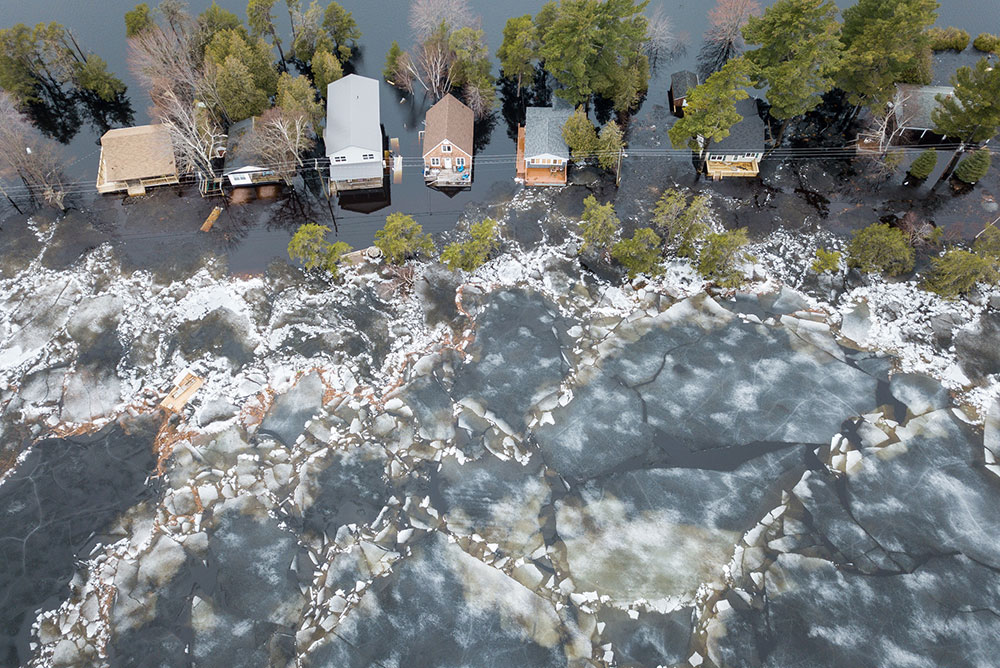Adapting to climate change: ISO 14090 tells you what to do

The predicted and observed impacts of climate change are likely to weigh heavily on companies and local authorities that fail to anticipate them. To help them, there is now a robust framework and approach that enables them to plan their adaptation actions.
In autumn 2019, the World Meteorological Organization (a UN body) revealed that 2018 was one of the hottest years since 1850, with the average concentration ofCO2 in the atmosphere reaching new heights. Average weather conditions and the frequency of extreme events (heatwaves, droughts, storms, floods, etc.) are already undergoing profound changes. One thing is certain: these changes will continue to amplify until the end of the century. ” It has therefore become necessary to prepare for the sometimes devastating consequences of climate change: in parallel with mitigation measures, we need adaptation measures ,” maintains Laurence Thomas, project manager for “Mitigation and adaptation to climate change” at AFNOR Normalisation.
Laurence Thomas headed up the professional committee which, for France, helped draft a new international voluntary standard, NF EN ISO 14090, which is intended as an instruction manual to help companies and local authorities of all sizes think in terms of climate adaptation. This theme is one of the priorities of the French standardization strategy, under the heading ” ecological transition “. Validated by an ISO committee made up of 62 countries, the standard was published in France in November 2019 in the AFNOR collection, eighteen months after being submitted for public inquiry.
NF EN ISO 14090: putting the concept of resilience into practice
Until now, only local authorities have been helped in their efforts to adapt to climate change, thanks to ADEME’s Impact’ Climat and Objectif’ Climat recommendations and methodologies. The new ISO 14090 standard has drawn on these methodologies, adapting them to all types of organization, especially companies. To illustrate the benefits of adaptation, ADEME has published a collection of experiences from four companies in France and Canada, varying in size. These include a small cocoa trading company, Rockwinds, as well as an international group such as Vinci Autoroutes. ADEME will be back again in 2020, with a call for expressions of interest (AMI) to help fund experiments in adapting to climate change. The selected organizations will be supported by a specialized consultancy firm.
In the first collection of experiences, Vinci Autoroutes describes how it has put the concept of resilience into practice. In 2016, the A10 freeway, which it manages under concession, had to be closed for ten days due to torrential rain. Its reopening mobilized nearly 300 people. The episode struck a chord with the company, which launched an in-depth review to limit the economic damage caused by extreme weather events over the long term. To anticipate the risk of landslides associated with clay shrink-swell, the company plans to install ground sensors. It also plans to use a tool to assess the premature ageing of structures.
In addition to resilience, ISO 14090 adjusts the main principles of the ISO 14000 series of environmental management standards.. “The goal, explains Céline Phillips, a specialist in this field at ADEME and member of the international working group on ISO 14090, is to identify, prepare for and manage the impacts of climate change. It’s about deploying best practices, improving performance by adapting the management system, and creating an organizational culture that engages in a continuous cycle of self-assessment, correction and improvement. ” In short, learn to anticipate without waiting. In concrete terms, this means drawing up an action plan specifying the timetable for implementation, monitoring, evaluation and communication.
Adapting to climate change: risks, but also opportunities
ISO 14090 is an umbrella standard, and will be the subject of specific adaptations. A diagnostic (ISO 14091) and planning (ISO 14092) methodology for local authorities is due to be published shortly. For its part, the European Committee for Standardization is planning to include adaptation to climate change in several sectoral standards: energy, transport and construction. These include NF EN 50125-1 of July 2014 on railway applications, or NF EN 16798-5-1 of August 2017 on the energy performance of buildings.
Let’s also look at the positive side of things: this adaptive dynamic not only helps to prevent or minimize potential damage, but also to take advantage of opportunities that may arise. According to a report by the United Nations Framework Convention on Climate Change (UNFCCC) published in June 2019, a group of major companies estimates that climate risks will cost them some $1,000 billion… but will also enable them to reap potential gains of up to twice that amount, by marketing new products and services! A further argument to encourage interested organizations to jump on the voluntary standardization bandwagon.
Marc Guitard/Getty Images